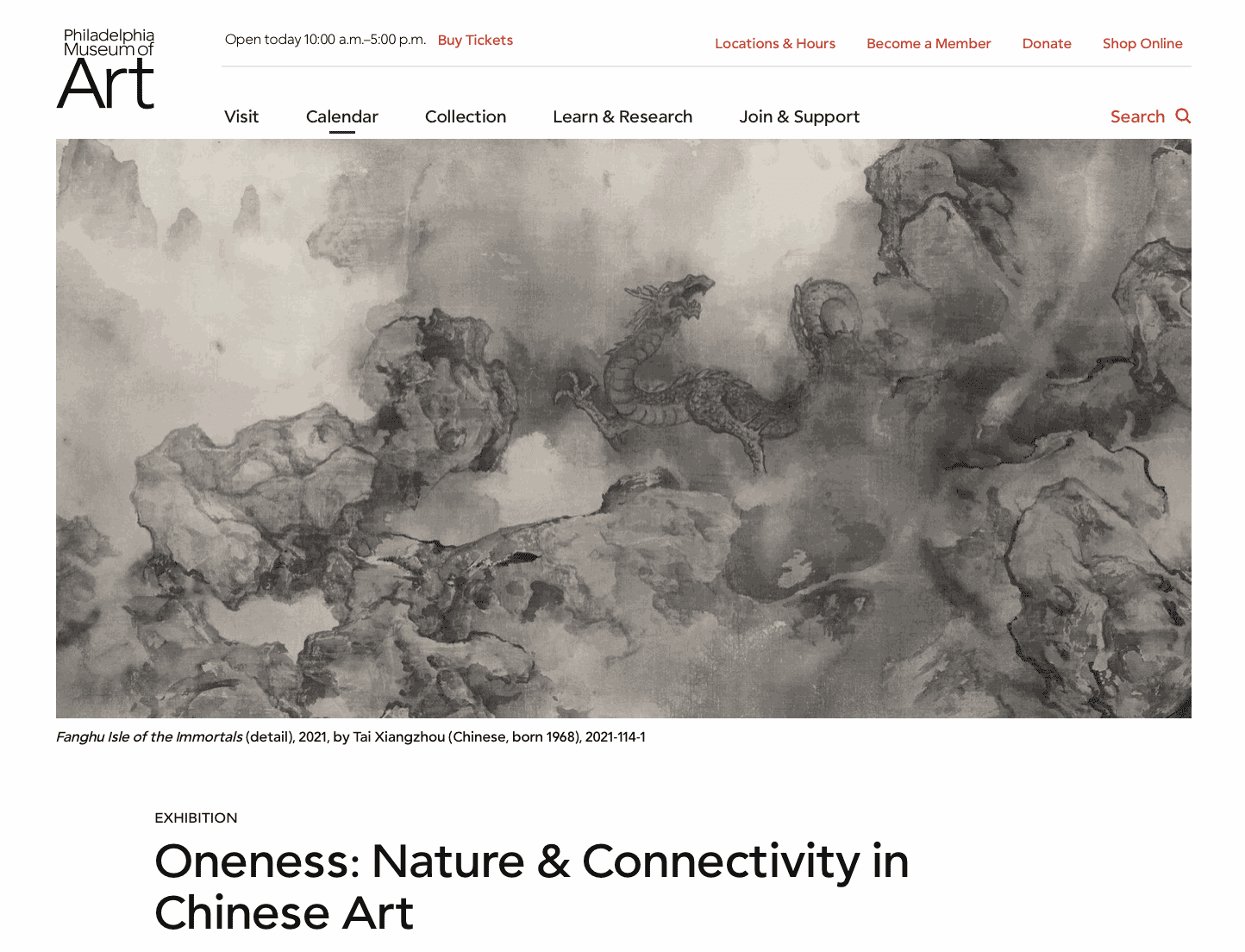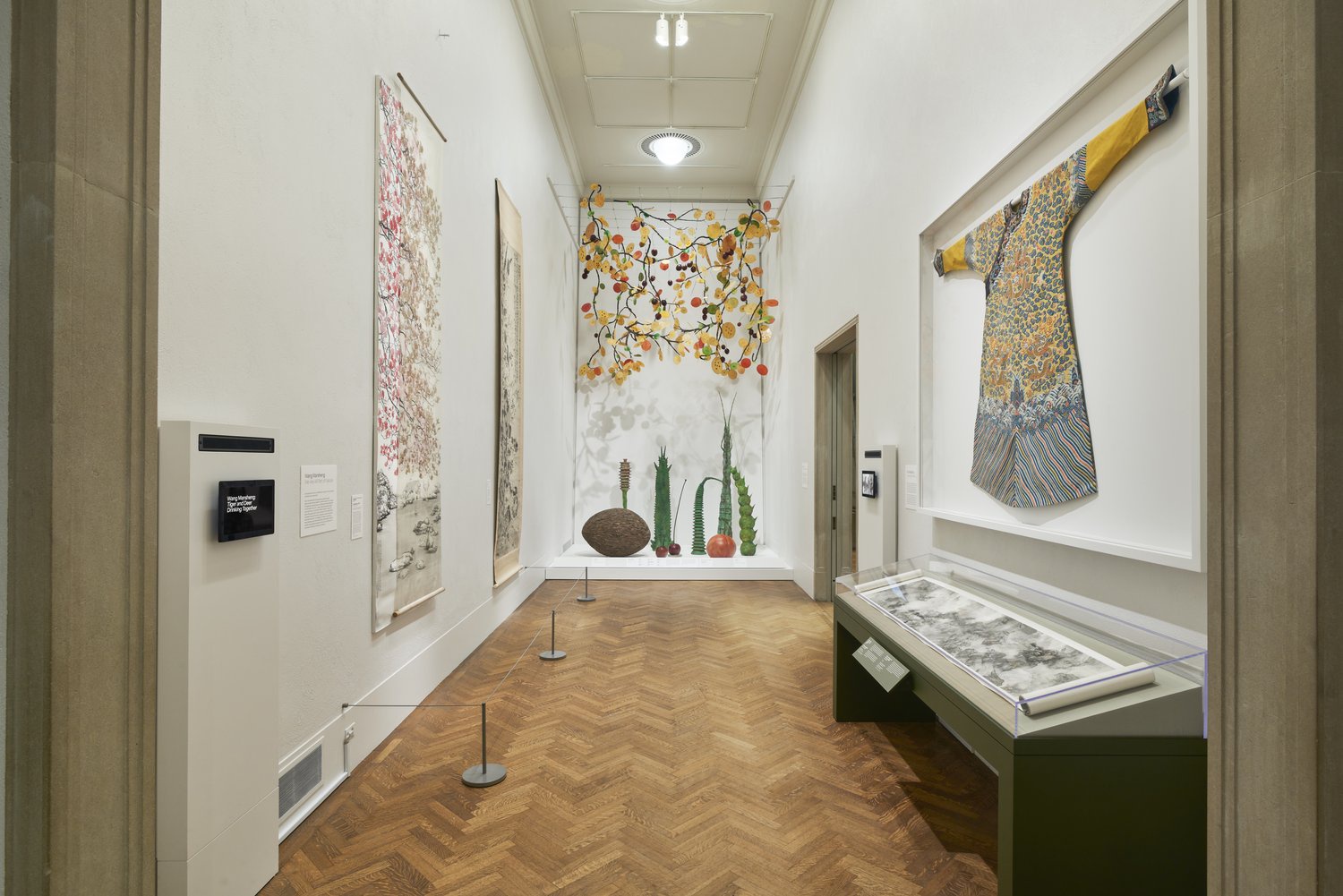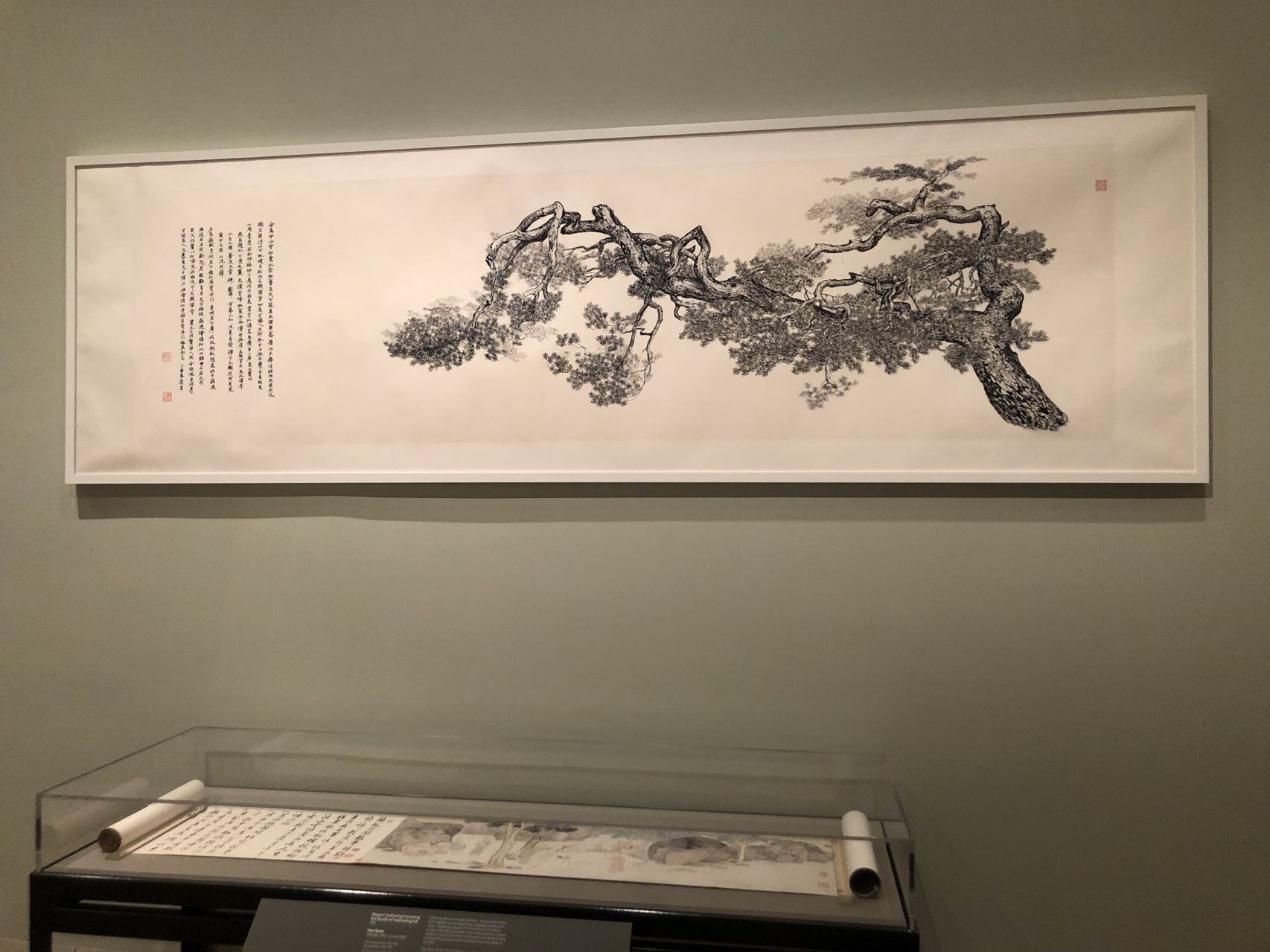
Oneness: Nature & Connectivity in Chinese Art opened at The Philadelphia Museum of Art, featuring the works by four contemporary Chinese artists Tai Xiangzhou, Wang Mansheng, Ming Fay, and Bingyi. The exhibition is curated by Hiromi Kinoshita, Curator of Chinese Art and Gabrielle Niu, former Andrew Mellon Postdoctoral Curatorial Fellow. It explores the questions of “what is nature?” and “what is the relationship between humans and nature?”. All the featured artists embrace and adapt historic Chinese artistic traditions through their chosen materials, process, or themes.

Installation image

Tai Xiangzhou, Fanghu Isle of the Immortals, 方壶州图, Fanghu zhou, 2021, Ink on silk, mounted as a handscroll, 5 3/8 inches × 6 feet 6 1/8 inches
A sizable handscroll over six feet long, Tai Xiangzhou‘s Fanghu Isle of the Immortals (2021) takes its inspiration from one of the legendary Daoist paradises of Fanghu. The painting depicts a primordial landscape where dragons soar and fantastical rock formations float in the mist. For Tai, nature is always in the midst of transformation, and Fanghu reflects his observation of nature, which contains an unknown force in constant movement. The work is part of his Celestial series, which explores man’s relation to the cosmos and the state of constant flux in which materials and energy exist. For this work, Tai uses ink made during the Qing Dynasty on silk material to create textures and patterns. The old ink provides a level of transparency and tonal richness unsurpassed by modern, mass productions.

Tiger and Deer Drinking Together, 2022, by Wang Mansheng
Unlike Tai’s mystical portrayal of nature, Wang Mansheng takes a more figurative and symbolic approach. His Tiger and Deer Drinking Together (2022) shows a fearsome tiger and a tender deer drinking from the same waterhole under a blossoming magnolia tree. A piece of silk with a more subdued palette is overlaid on top of the paper. The brown petals are painted with black walnut ink that Wang made himself with materials sourced from the Hudson Valley region where he lives. “The color, dark brown, when it’s dry, has a little bit of silver gray shining in the black walnut ink. It feels like the [Buddhist] Pure Land. You forget all the other things,” said the artist. Painted in the year of the tiger, which Wang himself belongs to, the work portrays the peaceful state of coexistence between two animals. However, just as Wang was finishing the painting, the news came: Russia invaded Ukraine. Shocked, the artist included his comment in the inscription.

Leaning Pine, 2017, by Wang Mansheng

Installation image
The Philadelphia Museum of Art is one of the oldest encyclopedic museums in the United States. Established in 1876, the Museum has in its collection more than 24,000 objects, including major holdings of European, American, and Asian art.



